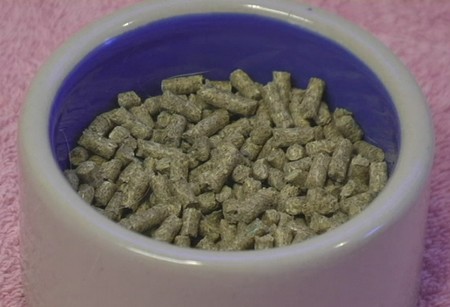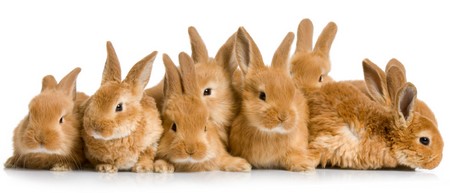A varied menu that consists of hay and dry, green, and moist feed keeps your rabbit healthy and fit. An unbalanced diet leads to deficiency diseases and malfunction of the digestive tract.
Hay Is Essential
High-quality hay contains important nutrients and irreplaceable roughage that regulate the rabbit’s digestive system; therefore your dwarf’s hay rack must always be well filled, even at night. Hay is not fattening!
The following are characteristics of good hay:
- It contains herbs, flowers, various grasses with leaves, flowers, and fruit stems.
- It has a greenish color, neither yellowish nor gray.
- It gives off an aromatic scent.
- It comes from fields untreated with chemicals. High-quality hay can be bought in the pet or feed store. It is sold under the name “meadow hay.”
Inferior-quality, old hay has lost most of its nutrients. It is very dusty and irritates the rabbit’s airway. Be careful of hay that is damp or at all moldy. It can cause severe digestive disturbances, diarrhea, and colic in rabbits.
Dry Commercial Feed
Dry rabbit food that contains all the nutrients and vitamins your dwarf needs is available in the pet store labeled as “basic feed, rabbit pellets, enriched pellets.”
Supplementary feed is occasionally also given. Rearing feed is given to the young rabbit that is still in the developing stage. Breeding feed is intended for rabbits that must produce young. Finally, there is fattening feed for the fattening of rabbits that are being raised for food.

The different mixtures consist of green pellets (compressed feed elements), grain (as whole grains, crushed, or flakes), various seeds, some dried vegetables, and vitamins.
When buying food, make sure that
- the expiration date (usually printed on the package) has not passed; the food will then no longer contain all the important vitamins.
- the food mixture contains few wheat grains, and therefore more green pellets and dried vegetables (read the package label). Food with a high proportion of grain is very high in energy and must be fed sparingly so that the rabbit doesn’t become obese.
